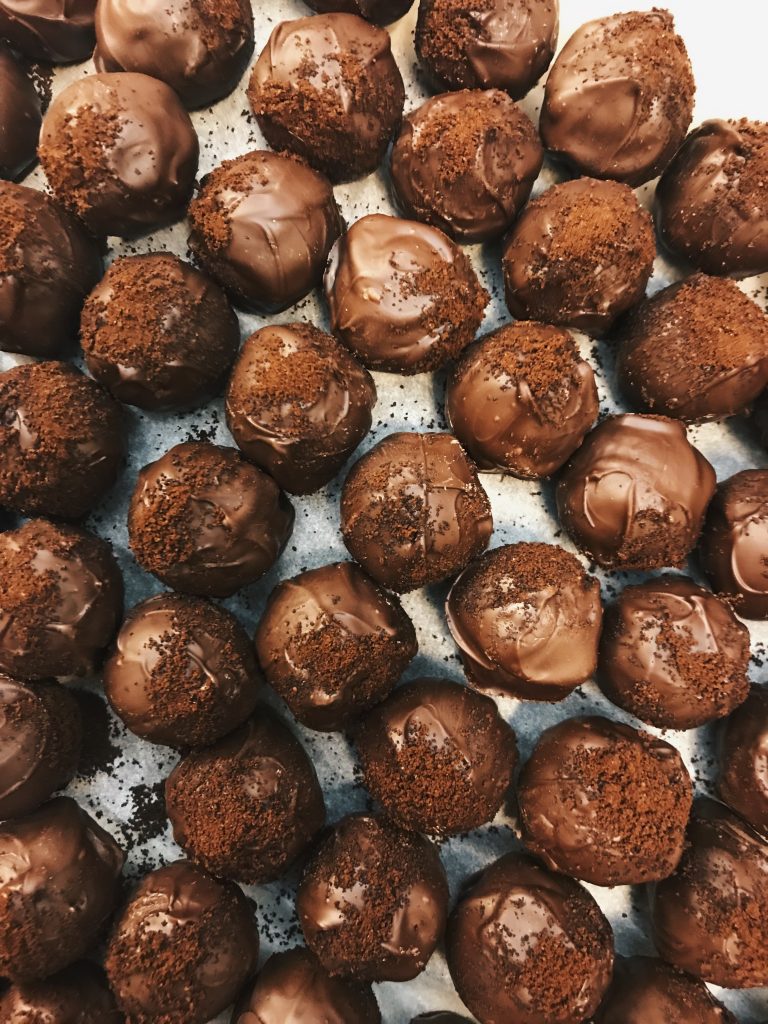Learn to Temper Chocolate
Learn to temper with detailed instructions and add the ‘wow’ factor to your chocolate creations. Why does chocolate need to be tempered? If chocolate is melted and set without being tempered, the result will be dull and streaky chocolate. Tempering allows the crystals in chocolate to suspend evenly whilst melted, creating bright, crisp and shiny […]
Learn to temper with detailed instructions and add the ‘wow’ factor to your chocolate creations.
Why does chocolate need to be tempered?
If chocolate is melted and set without being tempered, the result will be dull and streaky chocolate. Tempering allows the crystals in chocolate to suspend evenly whilst melted, creating bright, crisp and shiny chocolate once set.
What type of chocolate should be used?
For best results when tempering chocolate, couverture must be used. This chocolate uses real cocoa butter and can be found with the cooking chocolate at Salamanca Fresh. Start with at least 350g as it can be difficult to work with a smaller quantity. Chocolate chips or buttons are ideal for tempering as their uniform size will allow them to melt evenly. If using a block of chocolate, chop the chocolate into pieces that are no larger than 2cm square.
What sort of equipment will be needed?
- A small saucepan of water
- A clean, completely dry stainless steel bowl to act as a double boiler
- A rubber spatula for stirring.
Now to get started:
- Place the saucepan of water on the stove and bring the water to a slow boil.
- Place the chocolate into the dry metal bowl. Any moisture in the bowl will ruin the tempering process.
- Keep a kitchen towel on hand so that any stray chocolate drips can be wiped up quickly and easily.
- Reduce the water to a very gentle simmer and place the bowl of chocolate on top. Gently stir the chocolate with the rubber spatula until it has melted completely and looks smooth. Be careful to not heat the water too much as steam can introduce moisture to the chocolate and may cause it to harden or curdle. Heating the couverture too quickly can also cause it to crystalise, especially white chocolate.
- Test the temperature of the chocolate. You need to melt the chocolate to a target temperature of about 45C, being careful not to exceed this temperature. As soon as the chocolate reaches the proper temperature, remove the bowl from the heat, dry the bottom of the bowl and begin the process of cooling and agitation that is essential in tempering. One way of cooling the melted chocolate is to add chopped un-melted couverture to the bowl. Add about a third of the amount of chocolate you started with. Stir vigorously until the additional chocolate is melted. This process called “seeding,” allows the crystals in the unmelted chocolate to dictate the shape in the melted chocolate, giving you the desired smooth, glossy result.
- If you chocolate is too cool to work with, you will need to bring the chocolate’s temperature back up to approximately 32C to use it for coating or molding.
- Test the temper by dipping a knife into the chocolate and letting it sit for two to three minutes. If it is still sticky, then it’s not in temper. Properly tempered chocolate should be firm to the touch after a few minutes.


